
Open an account in less than 5 minutes, then track it from your phone. Plus explore a range of features like round-ups, auto-saving, pots, goals and more.

Is my money safe?
The Financial Services Compensation Scheme (FSCS) guarantees that it will step in to compensate the first £120,000 you have saved with a UK-authorised bank, building society or credit union in the event that the business goes bust.
Compare savings accounts
Compare other products
We currently don't have that product, but here are others to consider:
How we picked these
There are a lot of savings accounts available out there, so to make the comparison a bit easier, you first want to decide which type of account is best for you. This will largely depend on whether you want ready access to your money, or whether you’re comfortable tying up your cash for a length of time.
If you have never signed up to a savings account before and would like to know how, then we have a guide on opening a new savings account.
Why should I compare savings accounts?
Chances are that if you’re on this page you know this already, but choosing the right savings account can make a significant difference for your finances. Using a top-paying savings account could leave you much better off than if you left your money in a lacklustre account.
There can be a big difference between top paying accounts and those at the bottom of the league table. The more you build up your savings, the more difference it’ll make. Say you have £2,500 set aside. With 1.5% annual interest, it’ll earn you £37.50 after a year. With 4% interest though, you’ll get £100. The difference between a pub lunch for two at the local Spoons and a nice dinner in a fancy restaurant. Just saying.
The other important thing to keep in mind is that there are different types of savings accounts with different features that fit different saving profiles. Someone who has built up a large pot of savings might be able to afford tying up some of their cash for a year or two, whereas someone with a smaller pot of savings might be better off with an account that gives them immediate access to their money if they need it.
But you don’t have to choose between one or the other because you could split your savings into multiple accounts, each with its own purpose.
So you should compare accounts, rates and features to find the best savings account for you. Learn more about the best places and type of accounts to save money.
How do I compare savings accounts?
Savings accounts aren’t the most complicated products in the personal finance world, so the list of their most relevant features is fairly short:
- Access. This is probably the first decision you need to make. Are you okay with your savings being locked away for a certain period of time? What if there’s an emergency? There are instant access savings accounts where you can withdraw the money with no notice needed to be given to your bank or building society. In contrast there are fixed-rate savings accounts where you can earn a higher interest rate but need to keep the money in the account for a fixed period of time.
- Interest rate. This is one of the most important factors to consider. Just be aware that, depending on how much you can deposit into the account and when, higher interest rates don’t always come with higher overall returns. You can browse savings accounts sorted by interest rate here.
- Minimum and maximum deposit. Some top-paying savings accounts either have a high minimum deposit (so most small savers can’t get them) or a fairly low maximum deposit (great for small savers but you’ll still need a different solution for the rest of your savings if you have more).
- Time limit/introductory rate. Many savings accounts (particularly fixed rate bonds and regular savings accounts) expire after a certain period of time. Make sure you’re aware of what happens to your savings next. Also, if you find a really great rate somewhere, chances are it will only last for one year or so. More on this below.
- Overall earnings. Okay, this isn’t exactly a feature, but it’s an easy way to compare deals when things get complicated. Think of how much money you want to put into your new account, figure out how much it’ll earn you and compare different deals to find out which the most lucrative is.

"It may seem a daunting task to switch savings accounts. But by not doing so, you could be losing out on hundreds – maybe even thousands – of pounds in interest each year.
When inflation is high, the value of your savings becomes less in real terms. Essentially, what you can buy with the money sitting in your savings account now, is less than what you could buy a year ago. That’s why it’s important to earn as much interest as you can to minimise the effect of inflation on your savings.
While there may not be a switching service like there is for current accounts, it’s still easy to switch savings accounts. The first step is to compare the best rates available for your chosen type of savings account.
The next step is to check if the provider is protected by the Financial Services Compensation Scheme (FSCS). This means that your deposits are protected up to £120,000. So if the provider were to go bust, you could get your savings back. One thing to be aware of though, if you have multiple accounts with one banking group, these all contribute towards the £120,000 limit. You can check whether a provider has FSCS protection by looking for the logo in our comparison tables.
If you’re worried about sending a large amount of money at once, you can start by sending a small amount – say £1 – to check it arrives safely. Then you can transfer across your remaining savings balance. However, make sure to check your new savings account allows multiple deposits – some fixed-rate accounts won’t allow you to make further additions.
Finally, if you’re worried about not being able to access your savings, then it’s probably best to go for an instant access or easy access account. You may get higher rates with a fixed-rate bond, but your money will be locked away for the duration of the term and you won’t be able to access it."
An overview of our savings comparison
| Savings account types include | Easy access, cash ISAs, fixed-rate bonds, notice accounts, regular savers |
|---|---|
| Number of accounts | 2068 |
| Opening options | Branch, website, mobile app, post, telephone |
| Best easy access rate | 6% |
| Best cash ISA rate | 4.65% |
| Fixed cash ISA terms | 6 months - 7 years |
| Best fixed-rate bond rate | 4.51% |
| Fixed bond terms | 1 month - 7 years |
| Best notice account rate | 4.5% |
| Notice account periods available | 7 days - 195 days |
| Best regular saver rate | 7.5% |
Savings accounts vs inflation
If you read personal finance news, you may have previously heard about savings accounts that “beat” inflation.
That’s because if you keep your savings in an account that pays less than the inflation rate, your money will be worth less and less every year. Inflation causes goods to become increasingly more expensive, which means that, with the same amount of money, you can buy less.
If you stash your savings under the mattress long enough, they’ll lose most of their value – just ask your grandmother how much it was for a loaf of bread 50 years ago.
An interest-paying savings account can partially prevent that, but unless the rate beats inflation, you’re still losing purchasing power and, by extension, money, even if it may not look like it.
Setting up a savings strategy
Avoiding spending is certainly the hardest part of saving, but deciding where to keep the money you’ve industriously put aside isn’t all fun and games either. Here’s some advice on how to approach the problem:
- Pick your current account first. High-interest current accounts aren’t common, and good rates are typically only available for short periods of time. Still, if you can bag a decent one, you should. Introductory rates are sometimes really great and you’ll always get access to your money.
- Emergency-proof your strategy. Whether you keep it in a current account or in an easy access savings account, make sure that if something happens, you’ve got a decent sum immediately available to take care of emergencies. Learn more about budgeting and saving in an emergency.
- Set up a regular saver for your monthly savings. Regular savings accounts tend to offer great rates, so if you save part of your income every month, you should open one. You can set up a standing order and forget about it, which will also eliminate the temptation of spending the money. However, be careful, because many regular savings accounts don’t allow you to withdraw your money once you’ve deposited it. They also only tend to last a year, after which point you will need to move your cash elsewhere.
- Plan for the long term too. After the first year or two of saving regularly, you’ll have enough to start thinking about your medium to long term strategy. You have many different options that mostly depend on what you’re planning to do with the money. For example, if you know for sure you either want to buy a house or save for retirement, a lifetime ISA offers good returns thanks to government contributions. Alternatively, if you’d like to keep your options more open, you may want to consider a fixed rate bond.
- Investing is an option. Investing your savings is way riskier than depositing them in a savings account and it isn’t for everyone. However, it’s also become much easier than it used to be, even for complete beginners. If it’s something you may want to consider at some point, you can read our guides on share trading and on stocks and shares ISAs.
What are introductory bonus rates?
Something to look out for when browsing savings accounts is high interest rates for new customers, often referred to as “introductory bonus rates”. While this is definitely an alluring feature, remember that when the introductory period is up you’re likely to be left with a significantly lower interest rate. Because of this, it may be a good idea to keep your account open while you qualify for the introductory rate, before switching to an account with a better rate once the introductory period is finished.
If you decide to go with an account offering an introductory bonus rate, make sure you’re clear on the terms so you don’t end up losing the rate. For example, if you withdraw money before the end of the introductory period the introductory rate may be withdrawn.
Are savings taxed?
A taxpayer who pays the basic rate of income tax can earn up to a maximum of £1,000 from interest payments on a savings account without paying tax, while a higher rate taxpayer can earn up to £500 before paying tax. This is what’s known as the Personal Savings Allowance. Additional rate taxpayers don’t get an allowance at all.
The Personal Savings Allowance is in addition to money earned from an ISA account, which is all tax-free.

What is the FSCS?
Short for Financial Services Compensation Scheme, the FSCS protects customers when financial services fail. Look out for its logo on the financial products you’re comparing. If your money is in a bank – an institution that holds a banking licence – then up to £120,000 is protected by the scheme if the bank goes bust. However, if you had more than £120,000 across two banks in the same group – such as HSBC and First Direct – then only £120,000 is protected. Find out more about banking brands that share the same FSCS protection.
Since 2001, the FSCS has helped millions of UK customers, paying out billions of pounds. If a firm has stopped trading or does not have enough assets to pay up, the FSCS will step in.
Best banks for savings customer satisfaction in 2025
We asked the account holders of savings providers featured in this table whether they’d recommend it to a friend and we’ve ordered the table by the percentage score. Our independent survey was carried out in January 2025. You can learn more about the research here.
| Brand | Logo | Customers who’d recommend | Review | |
|---|---|---|---|---|
| Yorkshire Building Society |  | 97% | With Yorkshire Building Society, you can choose from a range of savings accounts including regular savers. | Read our review |
| Plum |  | 97% | Plum started as a smart money management app but now has a range of competitive savings accounts for customers. | Read our review |
| Atom Bank | 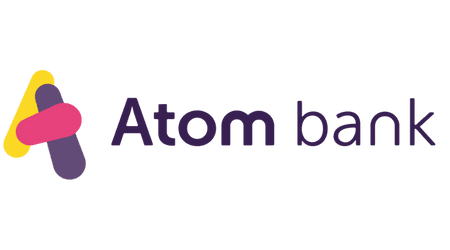 | 93% | Atom Bank has a good range of fixed rate savings accounts to choose from, the set up is fairly quick and the rates are competitive. | Read our review |
| RCI Bank | 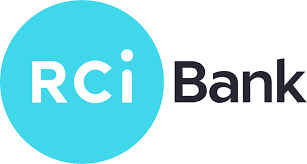 | 93% | With RCI Bank, you can choose from a a broad range of savings accounts with competitive interest rates. | Read our review |
| Marcus | 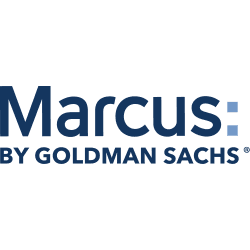 | 90% | Marcus by Goldman Sachs’ customers were impressed with its “ease of use” and competitive rates. | Read our review |
| Aldermore |  | 90% | Aldermore offers a range of savings accounts and individual savings accounts (ISAs). | Read our review |
| Shawbrook |  | 90% | Shawbrook Bank has a variety of savings options usually with good rates, including easy-access, fixed-rate and ISAs. | Read our review |
| Moneybox |  | 90% | Moneybox has different cash ISAs depending on your needs, as well as notice accounts and a simple saver. | Read our review |
| Ford Money | 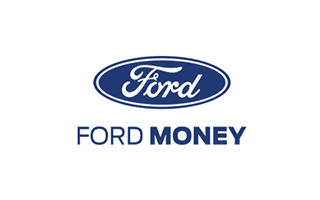 | 90% | Ford Money offers a range of savings products and ISAs that are designed to be easy to open and manage, and that offer competitive rates. | Read our review |
| HSBC |  | 87% | HSBC has lots of different savings accounts on its roster. Like other banks, there are accounts that have exclusive rates for its current account customers. | Read our review |
| Starling Bank | 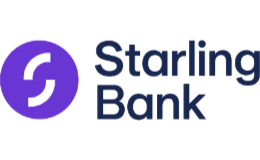 | 87% | Starling Bank has branched out into offering savings accounts, including a fixed-rate account and easy access Saving Spaces. | Read our review |
| Leeds Building Society |  | 87% | Leeds Building Society‘s savings accounts regularly top the best buy tables with tantalising interest rates. | Read our review |
| Virgin Money |  | 87% | Virgin Money has a good variety of savings accounts available to new customers, as well as exclusive accounts linked to its current account. | Read our review |
| Lloyds Bank | 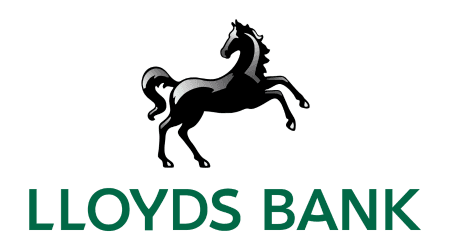 | 83% | Lloyds offers a range of savings accounts and other options to help you manage your money. | Read our review |
| NatWest |  | 83% | NatWest has savings accounts for every financial need, from regular savers to fixed rate ISAs to children’s savings accounts. | Read our review |
| TSB | 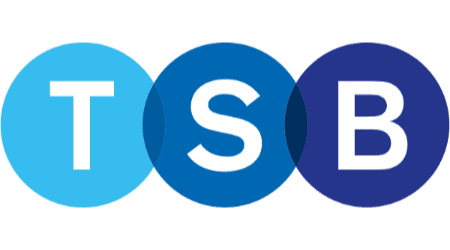 | 83% | TSB is one of the oldest and biggest names in British banking and may be a good savings option for those who like to bank in branch. | Read our review |
| Nationwide |  | 80% | Nationwide offers its members a range of exclusive savings accounts, some with competitive rates. | Read our review |
| Zopa |  | 80% | Zopa is a digital bank which looks to use technology to offer customers more innovative savings options. | Read our review |
| Monument |  | 80% | Monument specialises in savings accounts and loans, and it aims to meet the needs of the mass affluent market. | Read our review |
| Tesco Bank |  | 77% | The financial arm of the supermarket, Tesco Bank has a range of different savings accounts including a good variety of fixed term savers. | Read our review |
| Post Office | 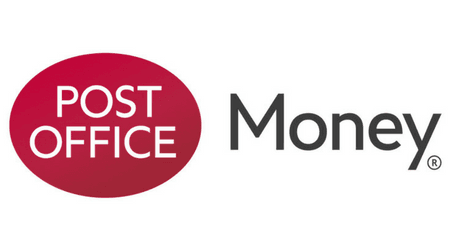 | 77% | Post Office offers both online and brand-based savings products, which makes it popular with customers who like its good customer service. | Read our review |
| Barclays |  | 77% | Savings accounts by Barclays are popular due to good customer service and decent interest rates. | Read our review |
| Chip |  | 73% | Chip is managed through an app and offers a selection of different savings accounts depending on your requirements. | Read our review |
| Halifax |  | 70% | Part of the wider Lloyds Banking Group, Halifax has several savings options, ranging from easy access accounts to fixed term savings. | Read our review | Santander |  | 67% | High-street bank Santander comes with all the advantages of a big bank and offers a wide range of savings accounts. | Read our review |
Which factors are most important in a savings account?
As part of our customer satisfaction survey, we received feedback from customers on the elements they value most in a savings provider. Below, you can see the results of this analysis, highlighting the most important factors when you’re looking for the best savings account.
| Ranking | Savings accounts factor | % of customers it’s a priority for |
|---|---|---|
| 1 | Interest rates | 47.1% |
| 2 | Ease of use and accessibility | 16.4% |
| 3 | Customer service and support | 12.4% |
| 4 | App quality and digital technology | 6.9% |
| 5 | Trust and transparency | 4.6% |
| 6 | Access to branches and in-person services | 3.5% |
| 7 | Access and withdrawal flexibility | 3.1% |
| 8 | Bonus rates and offers | 3.1% |
| 9 | Speed and efficiency | 1.7% |
| 10 | Fees and charges | 1.5% |
Frequently asked questions
Sources
Read more on Savings Accounts
-
Raisin promo codes
New to Raisin? See if you can keep some more money in your pocket with our promo codes and special offers.
-
Which banks are cutting interest rates?
Which banks are passing on interest rate cuts to their customers? Discover the upcoming rate drops by banks and savings providers in our table.
-
Revolut savings review
Revolut now offers savings accounts to its customers, known as Savings Vaults. You can get interest of paid daily, but the rate depends on which level of account you have. Find out whether Savings Vaults are a good option for your spare cash.
-
Working from home statistics: How many people work from home?
Our research found that 41% of Brits work from home at least some of the time. We look at who is working from home and how commuting costs may impact working patterns.
-
What is the average savings interest rate in the UK?
High inflation could be making your savings accounts lose value in “real terms”. We look at historical savings versus inflation rates.
-
Savings statistics: Average UK savings in 2025
Our 2025 savings statistics show the average person in the UK has £16,067 in savings but 1 in 6 Brits (16%) have no savings at all.
-
Best savings accounts for December 2025
Find out more about the different types of savings accounts on offer.
-
How much money should I have in savings?
See how much money people your age have in savings, and learn how to boost your savings balance if it’s below average.
-
Compare savings accounts with compound interest
We look at the definition of compound interest, what it concretely means and how you can use it to grow your savings more quickly.
-
Compare high interest & high yield savings accounts
Kickstart your savings plan with a high interest savings account.


